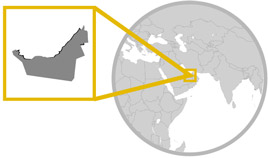Weather & Climate
Due to Turkey’s geographical location on several seafronts with a vast central region, the climate varies dramatically from area to area. The coastal areas bordering the Black Sea have a temperate Oceanic climate, the areas bordering the Mediterranean Sea have a temperate Mediterranean climate and the areas bordering the Sea of Marmara have a mix of the two. Meanwhile the central region tends to have harsher Arid conditions.
For example, in Istanbul on the Marmara coastline tends to have moderate summers with warm winters and can see temperatures rising up to 29 degrees Centigrade (84.2 Fahrenheit) between the summer months of June and September, but they can drop as low as 3 degrees Centigrade (37.4 Fahrenheit) in the winter months of December to February. Precipitation sees a gradual increase and decrease throughout the year, with as little as 30mm in the summer months and as much as 120mm in the winter months.
Antalya sees much hotter temperatures on the Mediterranean coastline, rising as high as 35 degrees Centigrade (95 Fahrenheit) in the summer months of July to August, and hitting a very warm 6 degrees Centigrade (42.8 Fahrenheit) or higher in the winter months of December to February. Rainfall is dramatic and dynamic in the region, with the lightest rain (less than 5mm) being in the summer months and the heaviest rain (up to 270mm) in the winter months.
Zonguldak on the Black Sea coastline is colder, with temperatures only getting up to 25 degrees Centigrade (77 Fahrenheit) in the summer months of July to August, and dropping as low as 3 degrees Centigrade (37.4 Fahrenheit) in the winter months between January and March. Rainfall sees little variation, with the heaviest precipitation at around 150mm during the autumn months and the lightest rain being at 50mm in the spring months.
The extremes are found in the mainland, with Sanliurfa in Southeastern Anatolia soaring as high as 39 degrees Centigrade (102.2 Fahrenheit) in its summer months of July to August, and Erzurum in Eastern Anatolia having temperatures as low as -15 degrees Centigrade (5 Fahrenheit) in its winter months of December to February. Rainfall in both of these regions can be extremely light all year around, never rising above 80mm in the winter months (which is the heaviest season) and falling below 5mm in the summer months (which is the lightest season).

